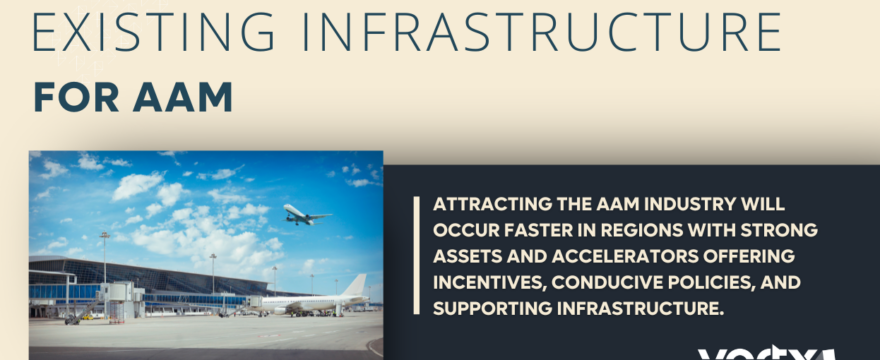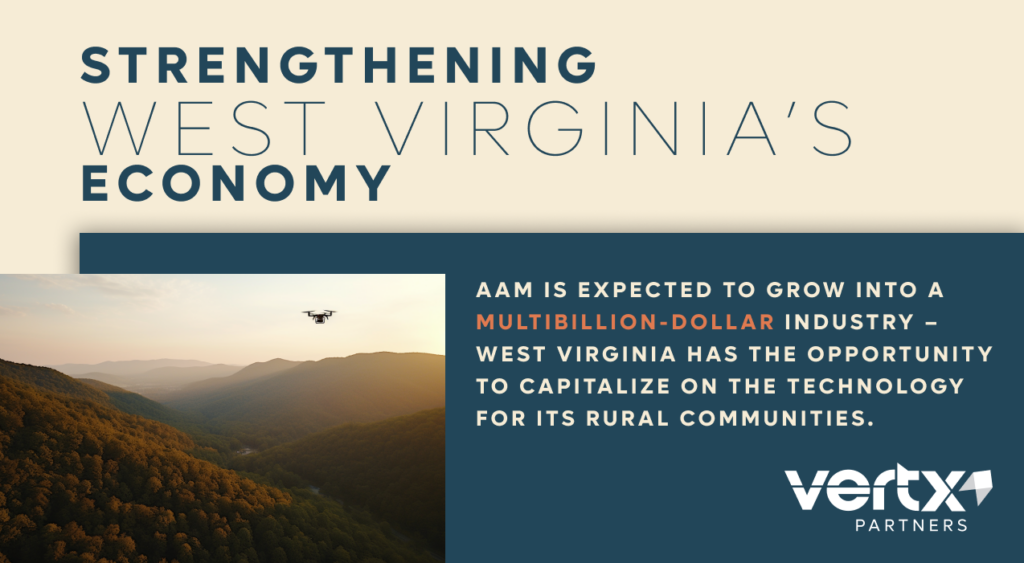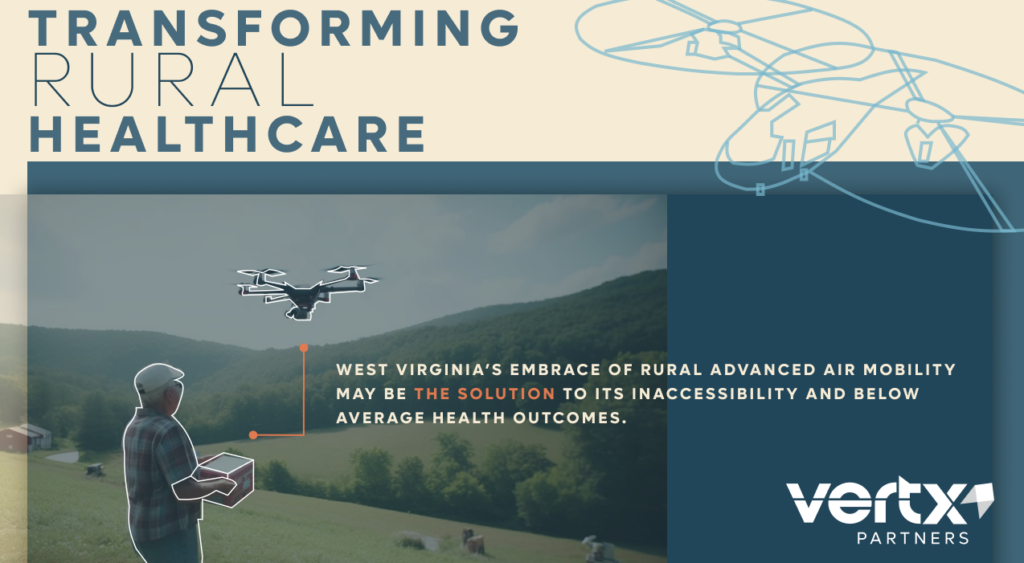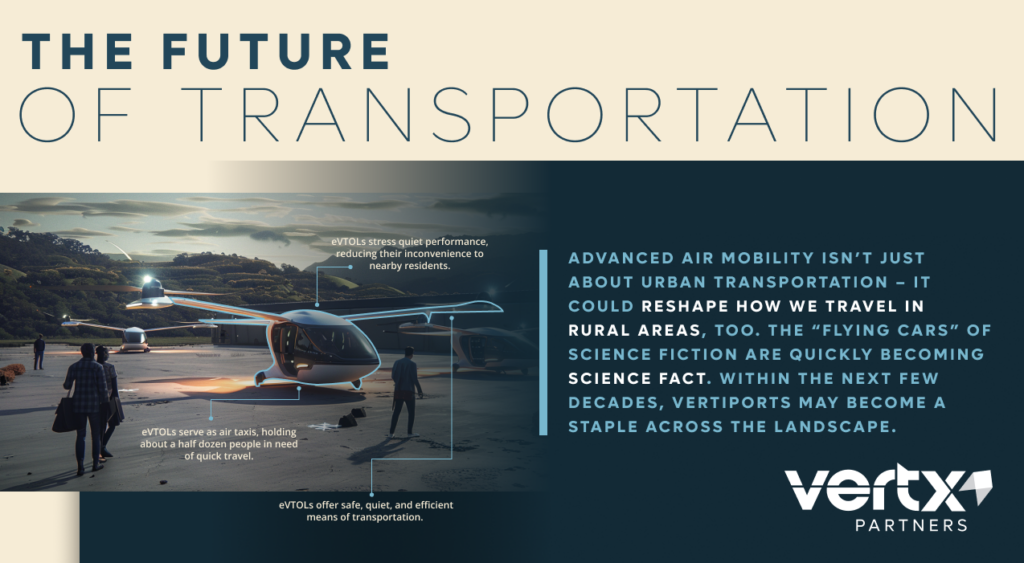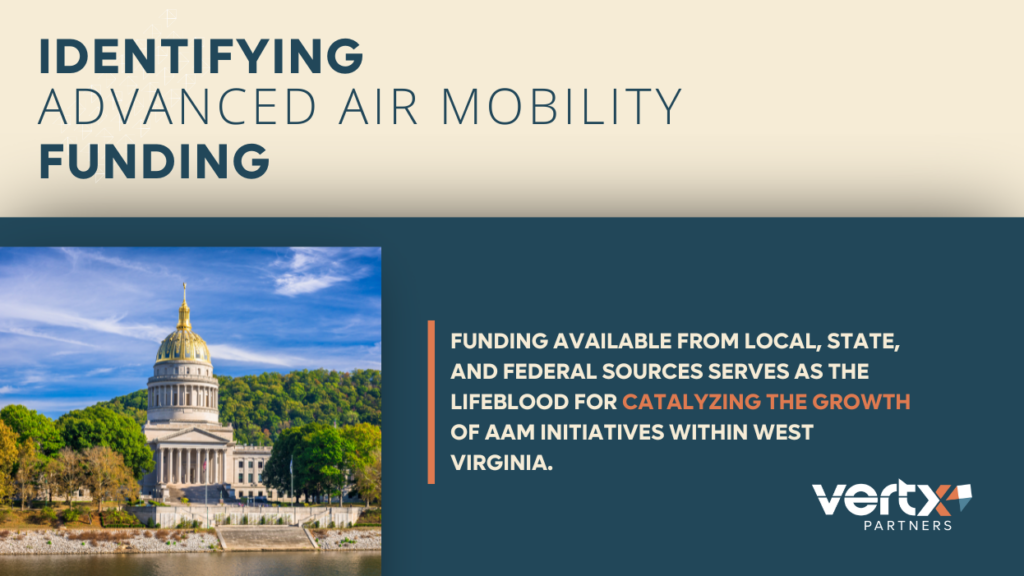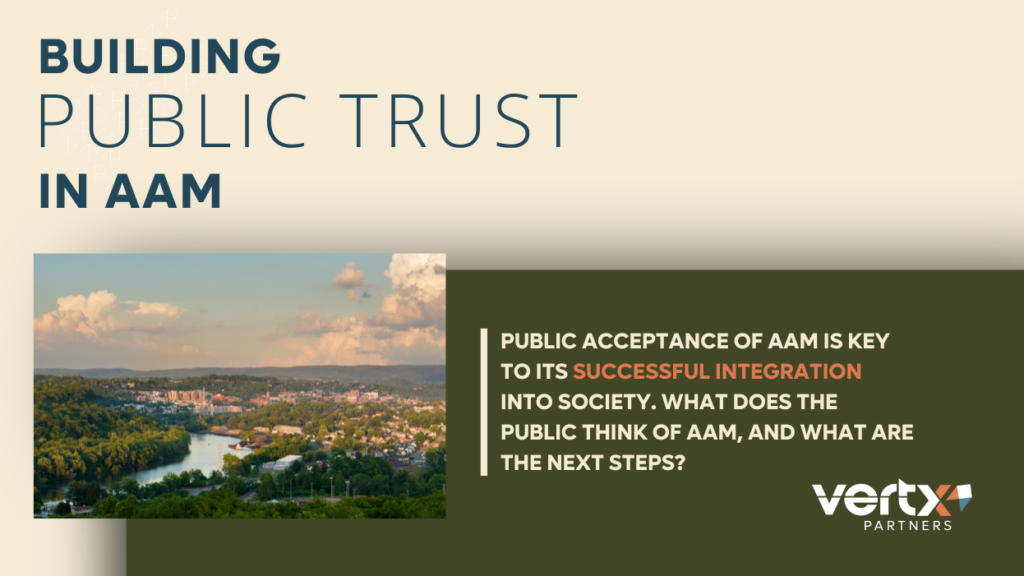Find out why West Virginia is the ideal Advanced Air Mobility hub and how existing infrastructure makes dreams of skyward expansion a reality.
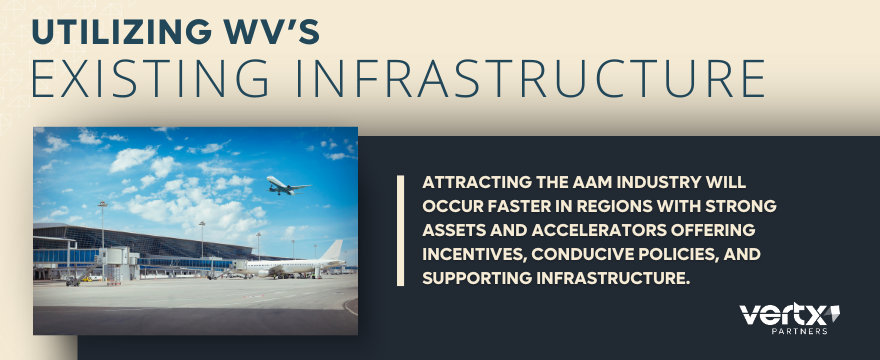
AAM & WV: A New Era in Aviation
Advanced Air Mobility (AAM) promises to redefine mobility across urban and rural landscapes alike. That’s why AAM continues to draw significant attention and action from various state and tribal entities aiming to get ahead in this rapidly advancing field. With the release of a new AAM study commissioned by Vertx Partners, West Virginia is now front and center on the national stage. Vertx asks: Does the Mountain State have what it takes to be a leader in AAM?
Attracting and maturing the nascent AAM industry will occur faster in regions with strong assets and accelerators offering industry support and incentives, conducive policies, lower barriers of entry, and supporting infrastructure. Vertx believes West Virginia is such a state. If it acts strategically, West Virginia has an opportunity to help lead the national AAM plan and tap into a projected $115 billion market.
West Virginia’s Strategic Location & Regional Connectivity
West Virginia, at the heart of Appalachia, is in a strategic location. Located between numerous major metropolitan centers, including Washington, D.C.; Pittsburgh, Pennsylvania; Lexington, Kentucky; and Columbus, Ohio; bordering five states and lying within a 500-mile radius of 40% of the U.S. population, West Virginia is not as secluded as often portrayed.
Ready access to over 130,000,000 people makes West Virginia a compelling middle ground for a mobile population. Additionally, the state’s rugged topography has historically created obstacles to traditional transportation methods, providing a demand for innovative solutions.
West Virginia can integrate novel AAM solutions by utilizing its 23 existing airports included in the FAA’s National Plan of Integrated Airport Systems (NPIAS). This would leverage West Virginia’s location to its advantage, serving as a go-between for several different urban centers and millions of people, creating a bridge between the Midwest and East Coast.
Testing Environments & Infrastructure
Another way West Virginia’s rugged landscape works to its advantage is how it offers a range of testing environments for AAM aircraft as they mature through certification. The state’s mountainous regions and diverse topography, paired with varying weather conditions and four distinct seasons, would test the agility, maneuverability, and stability of these aircraft, as well as their BVLOS capabilities.
Additionally, remote areas where ambient noise levels are relatively low could provide test environments to assess the environmental impact of AAM. Since the FAA deems noise as one of the primary environmental challenges to the continued growth of aviation, there’s an incentive to test in rural areas away from many people. And with West Virginia’s extensive road system comprising 34,420 miles of roads and highways (the sixth-largest state-maintained system in the nation), many remote areas are accessible for testers.
Opportunities for Growth & Innovation
West Virginia’s geographic hurdles and underserved communities create an opportune space for AAM services to bridge accessibility gaps. By leveraging the existing infrastructure and meeting the demand for alternative transportation, AAM services have the potential to revolutionize travel in the state. With little competition in this sector and a receptive environment buoyed by state incentives, West Virginia can address its historical transportation limitations and potentially pioneer a futuristic approach to mobility, offering efficient, accessible, and innovative transportation solutions for its residents as a crucial hub for regional connectivity.
Conclusion
West Virginia’s strategic location, rugged landscape, and local demand for accessible, multimodal transportation provide many opportunities for early AAM research and operations. Situated within a 500-mile flight radius of 40% of the U.S. population and bridging several metropolitan centers in the Midwest and East Coast, West Virginia is positioned to be a regional hub for AAM innovation and infrastructure. By leveraging its unique assets and accelerators, the state can strengthen its technology and innovation capabilities while addressing transportation challenges and driving economic growth.
To stay in the know and get involved in our statewide AAM efforts, contact Vertx Partners today.
